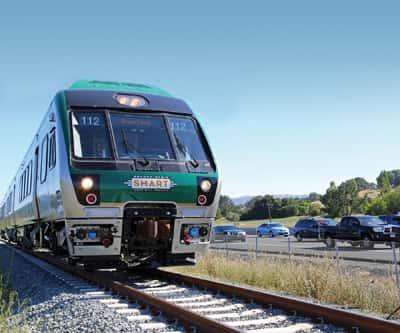Commodities have been the darling of investors recently. Over the past year, one commonly used commodity index, the S&P-Goldman Sachs Index (GSCI), has gained 23 percent, outpacing the S&P 500 (stocks) gain of 15 percent during the same period. Although the commodity indexes are dominated by energy (petroleum, natural gas), non-energy components have performed even better than the broad-based indexes. Precious metals (gold, silver, platinum) are up 38 percent, while agricultural commodities are up a whopping 70 percent over the past year.
Unlike stocks (“equity” shares in operating companies) and bonds (debt instruments of companies and governments), commodity investments reflect interests in tangible assets. Commodity prices can be either “spot” (immediate delivery) or “futures” (future delivery). Most trading in commodities takes place in the futures market.
At first glance, the futures market may appear to be nothing more than high-stakes gambling. However, futures contracts were developed to fill a real and important business purpose. Consider a farmer deciding in spring whether to plant wheat or corn. To determine which crop is likely to produce a better net return, the farmer must subtract the costs of production (such as seed, fertilizer and fuel for plowing) for each crop from the expected revenues at harvest. The farmer can purchase the seed, fertilizer and fuel now, fixing his costs. However, what price wheat or corn will fetch at harvest six months later is anybody’s guess, depending not only on the local weather but on the weather in other grain-producing regions, supply disruptions from natural and man-made disasters, and other factors beyond the farmer’s control. Futures contracts were designed to let the farmer “sell-forward” his crop, placing the risks of price changes on the buyer.
Manufacturers and other consumers of commodities have much the same incentive to control the costs of their inputs. When oil prices spiked in 2008, pundits said Southwest Airlines was run by geniuses because it had used futures to lock in lower-priced jet fuel months before prices rose. It’s possible for the farmer to sell-forward for too low a price and for the buyer to purchase forward at too high of a price—that’s a risk inherent in forward transactions.
In the modern world, only a minority of the participants in commodities futures markets expect either to deliver or take delivery of the actual commodities. The majority of participants are either hedging another position or simply speculating on the direction of prices. And that leads us to the difficulty of investing in commodities.
For anyone but a producer or manufacturer, storage represents an insuperable problem. It’s one thing to buy and hold 10 pounds of gold, currently worth about $225,000. Imagine you wanted to hold an equivalent amount of light, sweet crude. At $105 and 42 gallons per barrel, you’d need a 90,000-gallon storage tank.
For the average investor, involving oneself in the futures market without a full understanding of how futures contracts work can lead to rapid loss of one’s entire investment (and more). Exchange-traded funds (ETFs) have become hugely popular with stock investors. Recently, many ETFs have been created to allow easy access to commodity investing. But commodity ETFs, whether designed to track a broad-based index or a specific commodity, suffer from another problem the investor in futures contracts also face, a problem that goes by the unlikely name of “contango.”
Contango is not a South American dance form. Rather, the word apparently comes from the London financial markets at the end of the 19th century, possibly a corruption of the word “contingent,” referring to the fee a buyer had to pay a seller to defer delivery. For a non-perishable commodity such as oil or precious metals, contango can be expected to approximate the cost of storage.
For most commodities, the price for future delivery will exceed the spot price. Here’s an example. On a given date, the price for a standard contract of 25,000 pounds of copper for delivery six months hence might be $0.42 per pound, or $10,500 for the contract, whereas today’s spot price is $0.40 per pound. Assuming no change in the spot price of copper during the life of the contract, the contract value will decline to $10,000 as expiration nears. If the investor wants to maintain his investment in copper, he must sell his contract just before expiration and “roll” the proceeds into a new, six-month contract. Once again, he’ll pay more than the spot price for the future delivery. In our example, contango will cause the investor to lose 10 percent of his investment over the course of a year, even though there’s no change in the price of the underlying commodity.
As attractive as commodity ETFs seem from a standpoint of low transaction costs and ease of holding, the fact that most commodities trade in contango most of the time means that contango will eat significantly into an investor’s returns. Illustrating this point are the woes of the U.S. Natural Gas Fund (ticker UNG), which lost 56 percent in 2009, far greater than the decline in natural gas prices. Despite the losses, according to John Spence of MarketWatch, UNG was one of the best selling ETFs in 2009.
Another problem faced by commodity ETF investors is transparency. Commodity ETFs roll their contracts forward at predictable times. This gives other traders the chance to trade ahead of the ETF, causing the ETF to pay more when it buys and receive less when it sells. In a July 20, 2010 BusinessWeek article titled “Amber Waves of Pain,” the author cites Chicago trader Emil van Essen, who developed software to predict when commodity ETFs will roll their contracts. According to Van Essen, “These [commodity] index funds get eaten alive by people like me.”
The wise investor avoids dancing in the futures markets, whether directly or through commodity ETFs.



